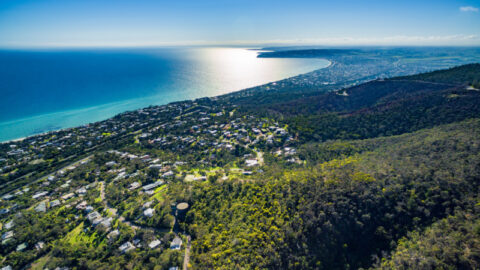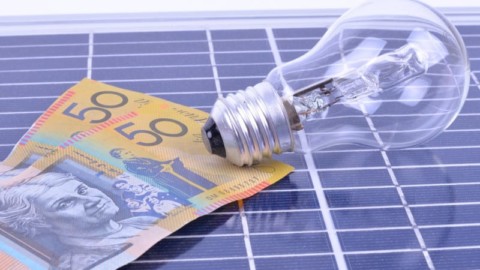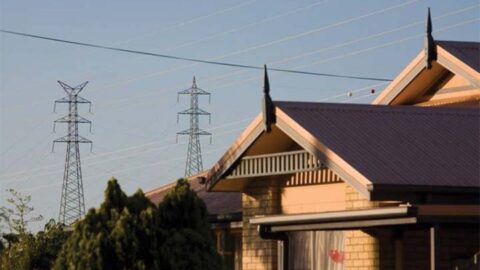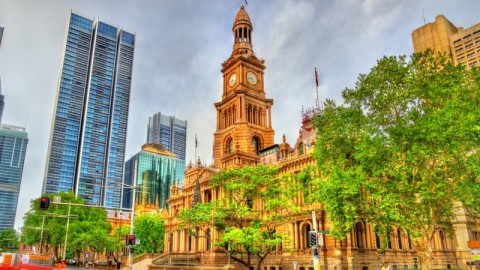The Queensland Energy and Jobs Plan was one of the biggest stories of the energy industry last year, with Premier Annastacia Palaszczuk unveiling plans to build a $62 billion clean energy future for the state in September last year. We caught up with Premier Palaszczuk to discuss the development of the Plan, details of how it will unfold, and the steps that will be taken this year to bring the Plan to life.
The Queensland Energy and Jobs Plan has been a major undertaking and all the new announcements as part of the plan are at a scale never seen before in Australia. It is set to evolve not only Queensland, but Australia’s energy sector. Can you run us through what the initial meetings and discussions for the plan were like? How did the ideas build and evolve into what it has now become?
Since forming Government in 2015, Queensland’s energy future has been a key focus for our government and over the last eight years we’ve been busy tapping into this incredible opportunity to transform our energy future. We initially committed to a 50 percent renewable energy target by 2030 and have invested billions of dollars in setting us up to capitalise on the jobs, industries, and exports of the future.
But this was just the start. In June 2021, I commissioned the transformational Queensland Energy and Jobs Plan, and I made it clear that our plan should take action that was unprecedented, innovative and world leading. Most importantly though, it should put people first.
What culminated in the $62 billion Queensland Energy and Jobs Plan is one of the most significant policy initiatives by government to date. It sets a bold vision which is all about a future of cheaper, cleaner and secure energy for Queenslanders, powering 100,000 jobs and creating new regional industries.
Our plan builds on an existing commitment of 50 per cent renewable energy by 2030, with two new renewable energy targets of 70 per cent by 2032 and 80 per cent by 2035. These targets will drive continued renewable energy investment while taking real action on climate change, protecting the reef, and responding to worsening natural disasters.
We made sure we collaborated closely with many stakeholders, groups, and experts across industry and small business, regional communities, employee advocates, scientific and environmental groups, and across our publicly owned energy network. Through this consultation, and in drafting our plan, it became clear that this was the greatest jobs opportunity in a generation.
We could become a global renewable energy superpower and create thousands of new jobs in Queensland’s energy, mining, and manufacturing industries. Because our energy system is majority publicly-owned it also meant that we had unprecedented control over ensuring that Queensland workers and communities weren’t left behind in the global energy transformation.
That’s why my Government worked closely with energy unions and publicly owned businesses to develop a Queensland Energy Workers’ Charter. The Charter will ensure our existing workforce is supported and has choices, opportunities and certainty. It also sets an enduring framework to deliver investment and new jobs in regional communities. Our $150 million Job Security Guarantee will ensure no worker is left behind – supported into new energy jobs or other career pathways through training and skills development.
It’s important to note too that during the drafting process there were several significant events that took place. Russia’s invasion of Ukraine in early 2022 sent global fossil fuel energy prices to record highs, we saw climate change contribute to unprecedented rainfall in Queensland which resulted in widespread flooding across many parts of the state, and Labor ended a decade of delay, denial and dysfunction on energy policy from the Liberal and Nationals in Canberra.
All these factors made it even more critical that our plan made sure Queensland could stand on its own two feet, take real action on climate change, and deliver more affordable power for generations to come. My government also engaged independent experts at EY to provide modelling and analysis that could quantify the outcomes of the Energy and Jobs Plan and ensure we were headed in the right direction. Their report compared market and investment opportunities against an uncoordinated outlook.
There have been discussions of how certain aspects of the Plan will be implemented into the National Electricity Market (NEM), such as the North West Minerals Province (NWMP). Can you update us on how these discussions with the Federal Government have gone to ensure proper and efficient implementation of the NWMP on the NEM?
For over a century Queenslanders have been making the most of our abundant natural resources. Now, as we look to benefit from the global clean energy revolution, there is a whole new generation of mining, manufacturing and exports that can come from North Queensland.
The Queensland Energy and Jobs Plan will deliver new transmission infrastructure from Townsville to Hughenden and onto Mount Isa. By connecting the North West power system to the national energy grid it will spur new investment in critical energy minerals mining.
These critical energy minerals will help fuel the clean energy transformation and are the building blocks of batteries, solar panels, and electric vehicles, and are in high demand right across the world. We are continuing to engage with the Federal Government for support for the project, and are working closely with the proponents on a government-led model.
The 2032 Olympic Games have also been a big part of the Plan, to stage a climate positive event. Can you describe the biggest changes the Plan will implement across the Games compared to previous hosts?
There is no other place in the world as well positioned as Queensland to lead the clean energy revolution. The ambitions set out in the Queensland Energy and Jobs Plan will mean that in ten years’ time we’ll be proudly hosting the most sustainable Olympic and Paralympic Games in the modern era, showcasing our clean energy credentials to the world.
I have committed to ensuring the Olympics and Paralympics are “climate-positive”. That means minimising emissions in line with the Paris Agreement, and offsetting more than 100 per cent of remaining emissions. To reduce these emissions, a carbon budget will be developed for the Games, and managed in the same way as a financial budget.
The Olympics and Paralympics will put Queensland on the global stage, and I expect that they will also trigger a wave of interest and
investment across Queensland’s energy sector. Early in 2023, the Brisbane Olympic Organising Committee (OCOG) will form a sustainability committee that will build a sustainability framework that will have a net positive impact on emissions. With less than a decade to go, this is an exciting step forward in the planning for Queensland’s largest-ever event.
The delivery of major transmission work in a specific time frame is a key consideration within the Plan. Plans to support this include early engagement across partners, the Federal Government and communities. How have these early plans been progressing?
Transmission work is critical to the efficient and effective delivery of renewable energy across Queensland. Put simply, we can’t solve the big challenges of tomorrow or realise the state’s full potential without the Queensland SuperGrid.
By 2035, Queensland will need four new high voltage backbone transmission lines. They will be the arteries connecting our pumped hydro assets and areas of high renewable energy. We will also need new transmission to unlock our Queensland Renewable Energy Zones. We will need around 25GW of renewable generation – of which, around 22GW is new. We’re currently developing a QREZ Framework, which will be legislated to support timely, efficient and consultative development of these areas.
Partnering with communities and all levels of government will be critical to a smooth, successful transformation, and work is well underway to support this. We are also working with states, territories and the Australian Government on transmission reform, and with national bodies on the development of the Queensland SuperGrid and QREZ delivery framework.
The Federal Government has committed $160 million to connect one of the world’s largest wind farm hubs to the national electricity market. The MacIntyre Wind Precinct in the Southern Queensland Renewable Energy Zone will generate over 2,000MW of renewable energy – enough power for 1.4 million households. In the Far North, power is already running through Queensland’s first Renewable Energy Zone, with the Kaban Green Power Hub’s $373 million wind farm officially connected to our new Queensland SuperGrid.
Right now, we’re building a new SuperGrid link between Cairns and Townsville to unlock more renewable energy, deliver more reliability in severe storms and cyclones, and creating good local jobs in North Queensland. We are also creating domestic manufacturing supply chains for the renewable energy components needed to build the Queensland SuperGrid.
We want to build as much of this renewable energy equipment as possible right here in Queensland – supporting local businesses and creating even more local jobs. As we refine transmission routes and specify individual QREZ areas, Queenslanders can expect that there will be continuous engagement with communities, landholders and businesses.
For the training and job portion of the plan, it’s been estimated that 70 per cent of these jobs could be in regional Queensland as investment flows to the regions. Was offering training and jobs in regional areas an important factor in the Plan and what is the long-term impact visualised for the regions?
Queensland’s clean energy revolution will be a revolution led by – and directly benefiting – our regions. Under our plan, regional Queensland will be the beating heart of our renewable energy transformation – housing pumped hydro assets, world-leading hydrogen precincts, large-scale wind and solar farms and operating our Clean Energy Hubs. In fact, 95 per cent of investment in Queensland’s SuperGrid will be in our regions.
Our Clean Energy Hubs will contribute to the growth and development of regional economies and we want to ensure energy workers can train, live and work in their local communities. Under our plan, we will develop a Future Energy Workforce Roadmap, outlining steps to build workforce capability, and ensure the right training is available in the right locations. We’ve also committed $90 million for two new transmission and training hubs in Townsville and Gladstone, which will support 570 workers each year.
We are directly investing in the regions, including establishing a $200 million Regional Economic Futures Fund to support economic and community development initiatives where existing coal plants are located. We will work with these communities and their local Governments, supporting a strong and sustainable future.
My government has also released a draft Regional Energy Transformation Partnerships Framework for consultation. It details ways to empower local voices and local choices, and position communities to benefit from increased economic development. I’d encourage Queenslanders to have their say on the new framework at qld.gov.au/energyandjobsplan.
It must feel exciting to be a pivotal part of the work for Queensland to reach its 50 per cent renewable energy target and be able to share such a significant energy Plan with the State and the rest of Australia. How does it feel to be creating and being a significant part of Queensland’s new energy legacy?
Last year, I visited the Torres Strait, where 15 islands are vulnerable to rising sea levels. On Thursday Island, traditional owners and elders showed me photos of ancestral graves that are now being washed away. Nowhere in our state is immune to the impact of climate change. Since 2011, Queensland has experienced 98 natural disasters – from floods and cyclones, to bushfires. We must do better, for our people and our environment.
Over the last eight years, there’s been an enormous amount of progress in our State – particularly when it comes to investing in, and transitioning to, renewable energy. To-date, my government has facilitated around $11 billion in renewable energy investment, supporting 50 large-scale renewable projects, more than 7,900 construction jobs, and helping Queensland avoid 13.8 million tonnes of emissions annually.
Cutting emissions – including through our revised renewable energy targets of 70 per cent by 2032 and 80 per cent by 2035 – is all about responding to the immediate threat of climate change. The threat imposed by climate change is very real for Queensland. So, I’m very proud to lead a Government which is taking real action.
We’re not just responding to climate change, but helping to create new, sustainable industries, and securing reliable and affordable energy for Queenslanders. The Queensland Energy and Jobs Plan is one of the most significant energy plans of any Government in Australia. As Premier, it’s my great privilege to help deliver our plan – turning our greatest challenges into opportunities, setting our regions up for long-term prosperity and success, and preserving the great Queensland lifestyle for generations to come.
We’re already well on our way with the most valuable natural resources, world’s-best infrastructure, and some of the most highly skilled workforce anywhere in the world. Over the next century we’re going to decarbonise and power the world’s economy with Queensland-made clean energy, mining, and manufacturing. Now, it really is Queensland’s time to shine.





















Would be better off and more economical to push power prices down by building a couple of new power stations, coal gas or nuclear. Renewables will not be enough and never will be to power a state! This race to renewables is very dangerous and very costly as it is proving right now.
Blind Freddy could tell you that!